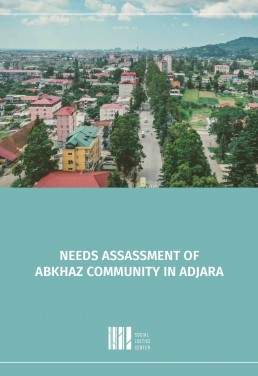საერთო ცხელი ხაზი +995 577 07 05 63


The Arabic term "Muhajiroba" refers to exile or immigration, and it is closely associated with the forced mass migration of Muslims from the Russian Empire to the Ottoman Empire. The primary factor behind the flight of the Abkhazians may be attributed to the geopolitical objectives pursued by the Russian Empire in the Caucasus region. This was evident in their intention to depopulate the newly acquired lands by eradicating unreliable and resistant ethnic groups such as the Abkhazians, Ubykhs, and Jikhs. The policies of the Russian Empire was heavily influenced by the religious affiliations of ethnic groups and peoples. The population residing in Abkhazia, including the Abkhazians and several other ethnic groups, adhered to the Islamic faith, which was perceived as a potential threat to the Russian Empire. The Ottoman Empire's interests were viewed as a major contributor to the phenomenon known as "Muhajiroba," which manifested as the use of North Caucasians (such as Abkhazians and other related ethnic groups) for military purposes. Abkhazian emigration has been observed in three waves, beginning in 1864, continuing in 1866, and concluding in 1877. According to multiple accounts, an estimated 40,000 to 50,000 individuals of Abkhazian descent relocated from their residences in the region of Abkhazia during a period of migration. It is worth mentioning that the population of Abkhazia during that period was approximately 80,000. Hence, the observed magnitude of emigration and its demographic consequences in Abkhazia are evident[1].
Following the suppression of Abkhazian resistance by the Russian Empire in 1866 and 1867, a significant influx of Abkhazians moved to Adjara. This event transpired in the village of Likhni on July 26, 1866. Subsequently, the Russian Empire issued a directive requiring Abkhazians and other ethnic groups to migrate to the Ottoman Empire from the central and northwestern regions of Abkhazia[2]. In 1877, shortly after the outbreak of the Russo-Ottoman War, the Muhajirs, a group of people who had emigrated from their original homeland, resettled in the Adjara region for a second time. A portion of the Abkhaz immigrants chose to reside in Adjara, which was an Ottoman Empire-controlled region at the time. This decision was influenced by several factors: first, the shared religious affiliation of Islam between the Abkhaz and the inhabitants of Adjara; second, Adjara's geographical proximity to Abkhazia; and third, Adjara's climatic conditions, which were comparable to those of Abkhazia. Compact Abkhazian communities emerged in the villages adjacent to Batumi, namely: a) Feiz, now known as Feria, b) Silibauri, now known as Salibauri, and c) Ankis, now known as Angisa, which is within Batumi's territorial boundaries. According to multiple sources, the contemporary Abkhaz population in Adjara is estimated to number between 1,600 and 2,000 people.[3]
The Abkhaz immigrants who settled in Adjara carried specific cultural elements (rituals, customs, cooking, etc.) with them, while simultaneously adopting the traditions and customs of the local Adjarian population. It should be noted that, owing to the shared social and cultural characteristics of the Adjars and Abkhazs, the Abkhazians were able to resettle in Adjara without any complications.
The preservation of national identity is a pertinent concern in modern times for many ethnic communities. Consequently, it is imperative to take into account not only the historical and cultural aspects but also the socio-cultural backdrop. This assertion holds particular significance for minority ethnic communities that are endeavoring to develop approaches for their own survival within a swiftly evolving global context. Given these considerations, it is important to examine the cultural legacy of the Abkhaz population residing in Adjara and the multifaceted requirements that encompass legal matters, social dynamics, and their involvement in political life. Furthermore, it is imperative to take into account the repercussions of the 1992-1993 conflicts on the Abkhazian population residing in the region of Adjara. Hence, there is a compelling need to examine the experiences of the Abkhazians residing in Adjara during the era of conflict and get insight into their perspectives regarding the peaceful end of the aforementioned conflict.
[1] Archival and memory studies - http://historyproject.ge/ge/archivememoryresearch/article/470/?cat_id=40
[2] The historical transformation of identity of the Abkhazian Muhajirs,
living in Adjara https://core.ac.uk/download/pdf/236388618.pdf
[3] It should be noted that on the Geostat website, according to the 2014 general census "Population distribution by regions and nationalities/ethnic groups", Abkhazians are not separated into a separate groups due to their small size. This may be explained by the fact that some Abkhazians self-identify as Georgians - https://www.geostat.ge/ka/modules/categories/739/demografiuli-da-sotsialuri-makhasiateblebi Thus, the quantity given in the text is named in the information sources (articles).
The website accessibility instruction